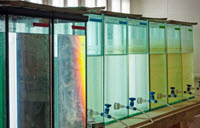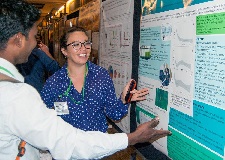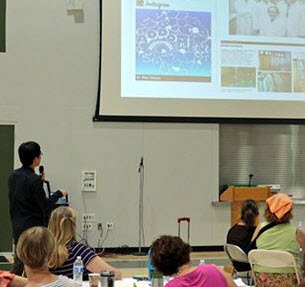Category Archives: ADDOMEx

Phytoplankton and bacteria in the northern Gulf of Mexico interact closely at the food web base and provide vital food and nutrients to marine life at higher trophic levels. During the Deepwater Horizon incident, these pervasive organisms played an important role in oil bioremediation before and after the application of chemical dispersants, which broke up Read More

Crude oil contains tens of thousands of hydrocarbons, including polycyclic aromatic hydrocarbons (PAHs) that create unique chemical fingerprints for different types of oil. Dawei “David” Shi uses geochemical analysis techniques in mesocosm studies to track these fingerprints, observe how they change over time, and investigate how dispersant affects PAH concentrations in the water column. David Read More

Marine oil snow is the largest commuter of carbon to the seafloor and occurs when oil and marine particles aggregate and sink through the water column. Previous studies show that oil and dispersant significantly increased marine microorganisms’ production of exopolymeric substances (EPS), an extremely sticky goo that holds marine snow together. Maya Morales-McDevitt conducts mesocosm experiments investigating how certain Read More

Cameron Jackson, a sophomore, is studying marine biology Texas A&M University at Galveston (TAMUG) and Oscar Agueda is a senior who will be getting his degree in marine science (TAMUG); both students are minoring in chemistry. When asked about career aspirations they stated that they hoped to go on to graduate school. “I want to Read More

James Chiu presented theAggregation and Degradation of Dispersants and Oil by Microbial Exopolymers (ADDOMEx) Consortium’s research to nearly seventy teachers participating in a program called Team-E Science, which will help them better understand engineering concepts. The program is part of a three-year endeavor to implement engineering curriculum in Merced and Mariposa county schools. Underrepresented minority groups Read More


